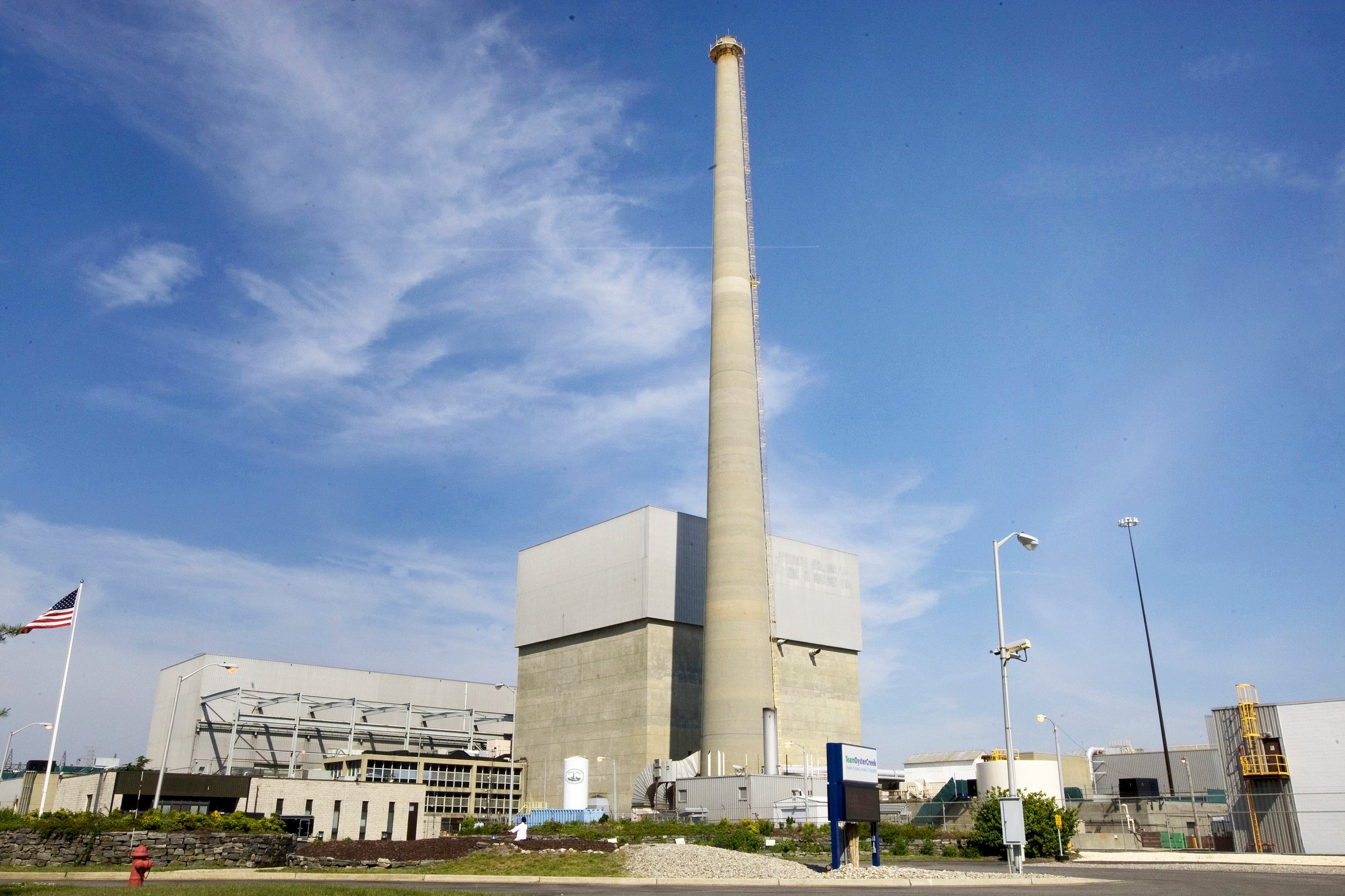New nuclear plant could rise at site of former one in NJ
The company that’s in the process of mothballing one of the nation’s oldest nuclear power plants says it is interested in building a new next-generation nuclear reactor at the same site in New Jersey

Your support helps us to tell the story
From reproductive rights to climate change to Big Tech, The Independent is on the ground when the story is developing. Whether it's investigating the financials of Elon Musk's pro-Trump PAC or producing our latest documentary, 'The A Word', which shines a light on the American women fighting for reproductive rights, we know how important it is to parse out the facts from the messaging.
At such a critical moment in US history, we need reporters on the ground. Your donation allows us to keep sending journalists to speak to both sides of the story.
The Independent is trusted by Americans across the entire political spectrum. And unlike many other quality news outlets, we choose not to lock Americans out of our reporting and analysis with paywalls. We believe quality journalism should be available to everyone, paid for by those who can afford it.
Your support makes all the difference.The company that's in the process of mothballing one of the nation's oldest nuclear power plants says it is interested in building a new next-generation nuclear reactor at the same site in New Jersey.
Holtec International last month received $147.5 million — $116 million of which will come from the U.S. Department of Energy — to complete research and development work on a modern nuclear reactor that could be built at the site of the former Oyster Creek Nuclear Generating Station in the Forked River section of Lacey Township, New Jersey.
Holtec owns that facility and oversaw its shutdown in 2018.
The Camden company's interest in building an SMR-160 reactor, which would be a nationwide demonstration project, was first reported Friday by an engineering industry website.
“As part of our application to the Department of Energy for its advanced reactor demonstration program, we expressed interest in possibly locating an SMR-160 small modular reactor at the Oyster Creek decommissioning site in the future,” company spokesperson Joe Delmar said in an email Tuesday. “This concept is only preliminary and something we would likely discuss with Lacey Township and the community if plans to locate (the reactor) at Oyster Creek evolve.”
Delmar said Holtec is “actively engaged with the Nuclear Regulatory Commission” about the project, but has not yet formally applied to build the reactor.
Holtec calls the SMR-160 “a versatile, safe, and economical small modular reactor,” one in which all key components, including cooling water, are sealed within containment facilities, and that can quickly be shut down during an emergency. It uses no pumps or valves.
The proposed reactor would power about 160,000 homes, compared to the 600,000 that were powered by Oyster Creek.
Lacey officials did not immediately respond to requests for comment Tuesday, but they have in the past strongly supported the Oyster Creek plant and the jobs and economic activity it generated in town.
Jeff Tittel, director of the New Jersey Sierra Club and a longtime opponent of the Oyster Creek plant, called the proposal “a threat to health and safety.”
“Things are going from bad to worse,” he said. “What was supposed to be the cleanup and ending of the Oyster Creek nuclear plant is now being looked at for another nuclear power plant. The whole point of closing and decommissioning this site was to get rid of the oldest and probably most dangerous nuclear plant. Putting all of that nuclear material in one area that is vulnerable to climate impacts like sea-level rise is a disaster waiting to happen.”
Oyster Creek, which had long been considered to be the oldest nuclear power plant in America until the NRC revised its historical statistics in 2018, fell victim to its age and inability to compete with newer, cheaper gas-fired power plants.
Oyster Creek and the Nine Mile Point Nuclear Generating Station near Oswego, New York, both went into operation in December 1969. The U.S. Nuclear Regulatory Commission had long listed both facilities as going online Dec. 1, 1969 — a date the agency acknowledged in 2018 was incorrect.
Nine Mile Point says it went into commercial operation on Dec. 14, 1969; Oyster Creek says it did so on Dec. 23, 1969. But Oyster Creek’s license was granted on April 10, 1969, about four months before one was given to Nine Mile Point, according to a 1970 document from the U.S. Atomic Energy Commission, a precursor agency to the NRC.
___
Follow Wayne Parry at http://twitter.com/WayneParryAC